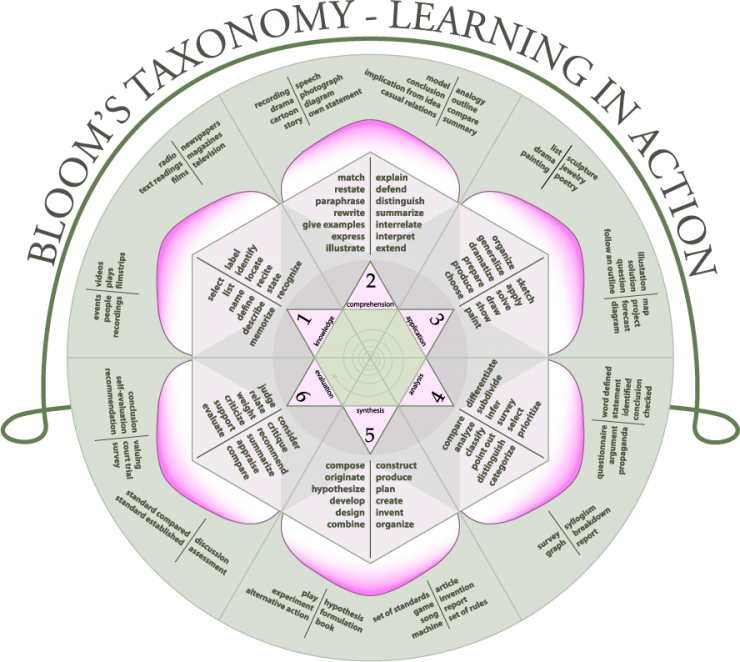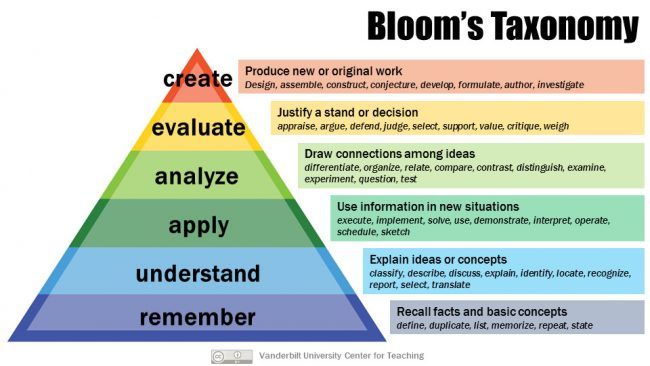What is Bloom’s Taxonomy?
In 1956, Benjamin Bloom with collaborators Max Englehart, Edward Furst, Walter Hill, and David Krathwohl published a framework for categorizing educational goals: Taxonomy of Educational Objectives.
Familiarly known as Bloom’s Taxonomy, this framework has been applied by generations of K-12 teachers, college and university instructors and professors in their teaching.
The framework elaborated by Bloom and his collaborators consisted of six major categories: Knowledge, Comprehension, Application, Analysis, Synthesis, and Evaluation. The categories after Knowledge were presented as “skills and abilities,” with the understanding that knowledge was the necessary precondition for putting these skills and abilities into practice.

The Revised Taxonomy (2001)
While each category contained subcategories, all lying along a continuum from simple to complex and concrete to abstract, the taxonomy is popularly remembered according to the six main categories.
A group of cognitive psychologists, curriculum theorists and instructional researchers, and testing and assessment specialists published in 2001 a revision of Bloom’s Taxonomy with the title A Taxonomy for Teaching, Learning, and Assessment. This title draws attention away from the somewhat static notion of “educational objectives” (in Bloom’s original title) and points to a more dynamic conception of classification.
The authors of the revised taxonomy underscore this dynamism, using verbs and gerunds to label their categories and subcategories (rather than the nouns of the original taxonomy). These “action words” describe the cognitive processes by which thinkers encounter and work with knowledge.

Course Objectives
Bloom’s Taxonomy is a hierarchical classification of the different levels of thinking, and should be applied when creating course objectives. Course objectives are brief statements that describe what students will be expected to learn by the end of the course. Many instructors have learning objectives when developing a course. However, many instructors do not write learning objectives. The full power of learning objectives is realized when the learning objectives are explicitly stated. Writing clear learning objectives are critical to creating and teaching a course.
Evolution and Application
Read this Ultimate Guide to gain a deep understanding of Bloom's taxonomy, how it has evolved over the decades and how it can be effectively applied in the learning process to benefit both educators and learners.